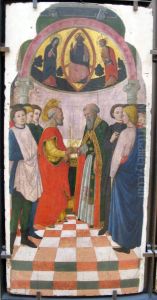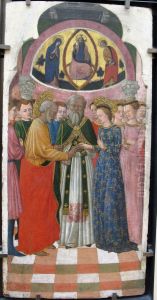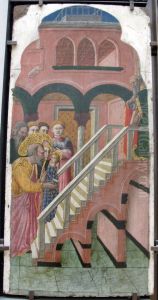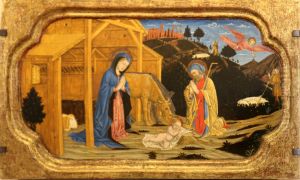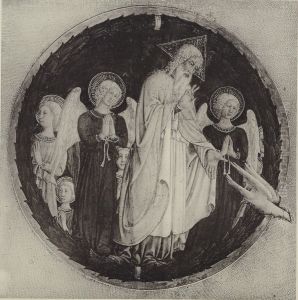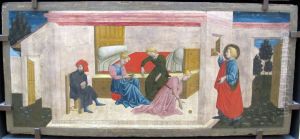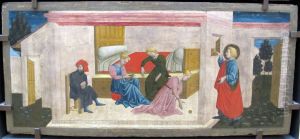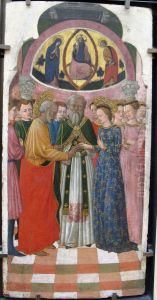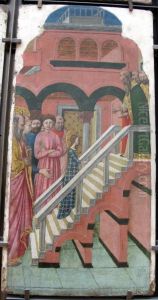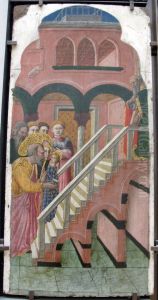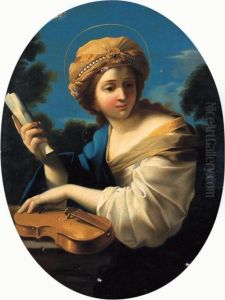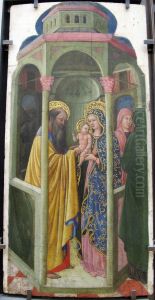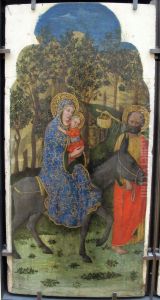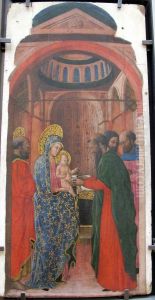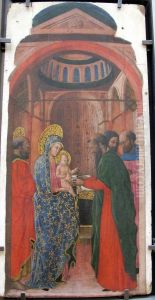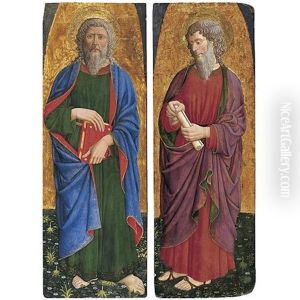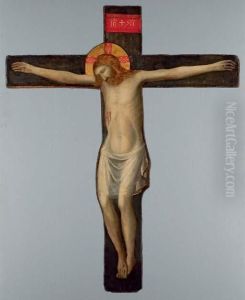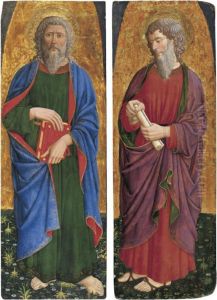Giovanni Francesco Da Rimini Paintings
Giovanni Francesco da Rimini, an Italian painter of the Quattrocento, the Italian Renaissance's 15th century, remains a somewhat enigmatic figure due to the sparse documentation regarding his life and works. While his exact birth and death dates are not known, his artistic activity is primarily documented around the 1440s, suggesting that his career flourished during this period. Rimini, a city in the Emilia-Romagna region of Italy, is noted as his likely place of origin or significant activity, which has influenced the naming convention by which he is known. His connection to the city of Rimini situates him within the vibrant cultural and artistic milieu of the Italian Renaissance, an era marked by a profound reawakening of interest in the art, literature, and ideas of ancient Greece and Rome.
Giovanni Francesco da Rimini is often associated with the Riminese school of painting, which was distinguished by its adherence to the Gothic tradition alongside the emergent stylistic features of the Renaissance. This unique blend of styles is evident in the limited number of artworks attributed to him, which reveal a sophisticated understanding of space, light, and human anatomy, albeit rendered with a certain adherence to the more linear and decorative elements of Gothic art. His works are characterized by their delicate execution, meticulous attention to detail, and the serene spirituality of the figures depicted.
One of the challenges in studying Giovanni Francesco da Rimini's oeuvre is the difficulty in distinguishing his works from those of other contemporaries, including Giuliano da Rimini and Pietro da Rimini, who were also active in the same region and period. However, art historians have attributed certain works to him based on stylistic analysis and historical documentation, which suggest his contribution to the development of Early Renaissance art in Italy.
Despite the limited information on his life and the modest corpus of works attributed to him, Giovanni Francesco da Rimini is recognized for his role in the transitional period of Italian art. His paintings, though not as widely known as those of the most celebrated Renaissance masters, offer valuable insights into the complexities of this transformative era. Through his work, scholars can trace the evolution of artistic styles and the interplay between local traditions and the broader currents of the Italian Renaissance.


